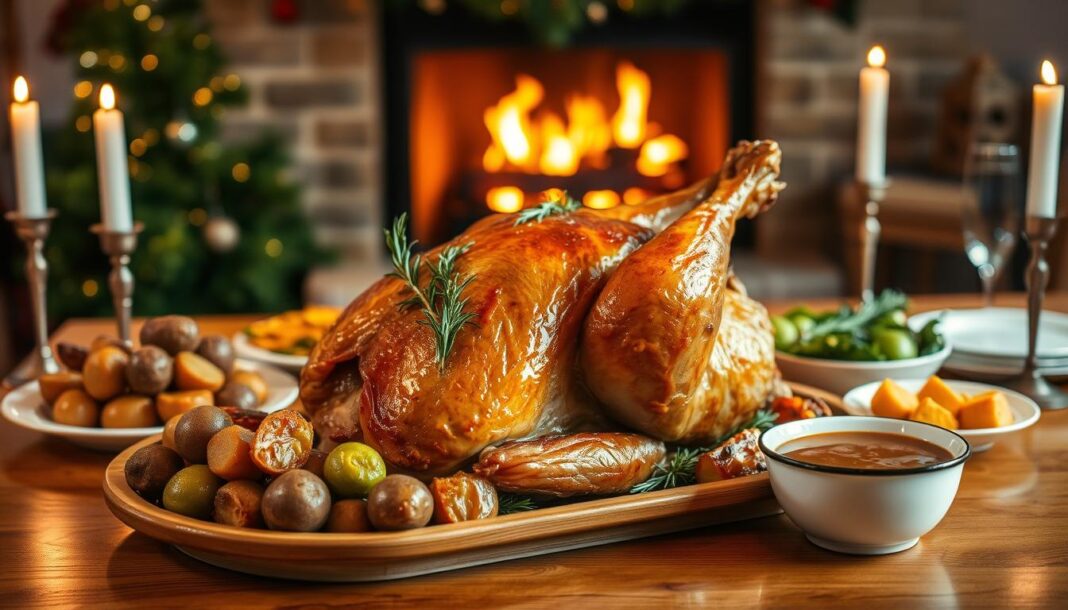The Star Trek franchise has always been a cultural phenomenon, captivating audiences with its futuristic vision and diverse alien species. One aspect that adds depth to this universe is its use of food as a tool for worldbuilding.
From the original series to the latest iterations, food plays a significant role in establishing cultural differences, creating diplomatic tensions, and highlighting the galaxy’s diversity. The Star Trek Cook Book attempts to bridge the gap between these fictional foods and recipes we can prepare today.
We’re exploring how this cookbook transforms seemingly inedible alien delicacies into approachable dishes, maintaining their distinctive Star Trek aesthetic and cultural significance.
Key Takeaways
- The significance of food in the Star Trek universe for worldbuilding.
- How the Star Trek Cook Book bridges fictional foods with real recipes.
- The cultural importance of different cuisines in the Star Trek series.
- Transforming alien delicacies into approachable dishes.
- The role of food in establishing cultural differences and diplomatic tensions.
The Culinary Universe of Star Trek
As we journey through the galaxy with Star Trek, we encounter a diverse array of foods that not only tantalize our taste buds but also enrich the universe’s cultural tapestry.
The challenge of creating a Star Trek cookbook lies in translating fictional foods into recipes that are both appealing and feasible. Many of these foods are described as unpalatable to humans or require imaginary ingredients, making the task quite daunting.
Food as Cultural Worldbuilding in the Final Frontier
Food plays a significant role in the Star Trek universe, serving as a tool for cultural worldbuilding. The various alien species and their culinary practices add depth to the narrative, making the universe feel more immersive and realistic.
The cookbook cleverly bridges the gap between the replicator technology of Star Trek and the hands-on cooking experience required in our kitchens. By using modern cooking techniques, food coloring, and creative presentation, the recipes evoke the alien aesthetic of Star Trek foods while ensuring they remain delicious by Earth standards.
| Culinary Aspect | Star Trek Representation | Real-World Adaptation |
|---|---|---|
| Replicator Technology | Instant food preparation | Hands-on cooking experience |
| Alien Ingredients | Cardassian yamok sauce, Vulcan plomeek | Substitutions with available ingredients |
| Culinary Presentation | Creative, alien-inspired dishes | Use of food coloring, modern techniques |
From Replicators to Real Recipes
The trek cookbook transforms Star Trek’s food references into tangible experiences, allowing fans to engage physically with the fictional universe. The recipes included are not only a tribute to the franchise but also a guide to creating out-of-this-world dishes.
For instance, the Cardassian Regova eggs recipe is a creative take on deviled eggs, using dye to achieve a unique appearance. This recipe showcases the blend of cooking techniques and imagination that the cookbook embodies.

Inside the Star Trek Cook Book by Chelsea Monroe-Cassel

With the Star Trek Cook Book, Chelsea Monroe-Cassel invites readers to explore the diverse culinary landscape of the Star Trek galaxy. This book is not just a collection of recipes; it’s a journey through the various cultures and worlds that make up the Star Trek universe.
Organization and Presentation
The Star Trek Cook Book is organized in a way that makes it easy for readers to navigate and explore different culinary traditions. Each spread features a color picture of the finished dish on one side, accompanied by an introduction to its origins and evolution on the other. The recipes are presented in a clear and concise manner, making it accessible to cooks of all levels.
The book’s layout is clean and modern, with hyper-compartmentalized recipe pages that make use of ample white space. This design not only reflects contemporary cookbook trends but also subtly evokes the sleek aesthetic of Starfleet and Federation design.
The Gastrodiplomat Concept
The concept of gastrodiplomacy is central to the Star Trek Cook Book. Monroe-Cassel uses food as a tool for cultural exchange and understanding, reflecting the show’s optimistic vision of the future. By exploring the culinary traditions of different Star Trek cultures, readers can gain a deeper appreciation for the diversity and richness of the Star Trek universe.
Visual Style and Photography
The visual presentation of the Star Trek Cook Book is truly striking, employing contemporary food photography techniques with bold colors and dramatic lighting. Each recipe is accompanied by a full-color photograph that serves as both instruction and inspiration, showcasing the textures and presentation methods that evoke the Star Trek aesthetic.
The photography cleverly highlights the otherworldly qualities of the dishes, using styling techniques to emphasize unusual colors, distinctive textures, and presentation methods. This focus on the food itself elevates it from mere novelty to serious culinary creation, making the book a must-have for both Star Trek fans and food enthusiasts.
Iconic Recipes from Across the Galaxy
The Star Trek cookbook brings to life iconic dishes from various alien cultures, making it a treasure trove for fans. As we explore the culinary universe of Star Trek, we find that the cookbook is not just a collection of recipes but a journey through the diverse cultures and worlds that make up the Star Trek universe.
Cardassian Regova Eggs: A Hands-On Experience
One of the standout recipes is the Cardassian Regova Eggs, a dish that offers a hands-on experience for the adventurous cook. This recipe showcases the cookbook’s ability to transform a fictional dish into a real culinary experience. By following the detailed instructions, cooks can recreate the exotic flavors of the Cardassian cuisine.
For those interested in exploring more fantasy food ideas, Historical Foods offers a wealth of inspiration.
Klingon Gagh: Reimagining the Inedible
The Klingon Gagh recipe is another highlight, reimagining a dish that is as challenging as it is intriguing. Gagh, a traditional Klingon serpent worm dish, is known for its unique texture and flavor. The cookbook provides a creative take on this inedible-sounding dish, making it accessible to brave cooks willing to try something new.
| Recipe | Culture | Description |
|---|---|---|
| Cardassian Regova Eggs | Cardassian | A dish inspired by the Cardassian cuisine, offering a unique flavor profile. |
| Klingon Gagh | Klingon | A traditional Klingon dish made with serpent worms, reimagined for the modern cook. |
| Quadrotriticale Salad | Original Series | A salad inspired by the fictional grain quadrotriticale, first referenced in “The Trouble with Tribbles.” |
Quadrotriticale Salad: The Trouble with Blue Food
The Quadrotriticale Salad is a fascinating recipe that pays homage to one of the most beloved episodes of the Original Series, “The Trouble with Tribbles.” This dish uses honey and beet juice to transform carrots into wormy tendrils and butterfly pea flower powder to achieve a striking blue hue, making it a visually stunning representation of the fictional quadrotriticale.
The use of blue food coloring or butterfly pea flower powder not only makes the dish visually appealing but also highlights the challenges of recreating alien foods, particularly those that are blue, a color not commonly found in natural foods.
The Evolution of Star Trek Cookbooks
From campy beginnings to sophisticated culinary experiences, the history of Star Trek cookbooks mirrors the franchise’s journey from niche to mainstream. The contrast between the 1999 Star Trek Cookbook co-authored by Ethan Phillips and William J. Birnes, and Chelsea Monroe-Cassel’s 2022 volume is striking.
The 1999 cookbook embodied the campy spirit of the time, with Neelix as the author, featuring recipes that were more about fan service than culinary practicality. In contrast, the 2022 edition adopts a more contemporary approach with professional recipe development and food photography, making Star Trek cuisine more accessible to a wider audience.
This evolution reflects broader changes in geek culture and how fans interact with franchises. Earlier cookbooks were novelty items for dedicated fans, while modern ones are sophisticated products that stand on their own merit. For serious fans and collectors, having both editions provides a fascinating look at how Star Trek’s food concepts have evolved.
The transformation in Star Trek cookbooks parallels the franchise’s growth from a cult favorite to a global phenomenon. Whether you prefer the nostalgic value of the 1999 edition or the polished presentation of the 2022 version, both books offer unique insights into the franchise’s culinary universe.
Ultimately, these cookbooks form a unique cultural artifact, documenting not just fictional foods, but how our relationship with media franchises has transformed over time.


